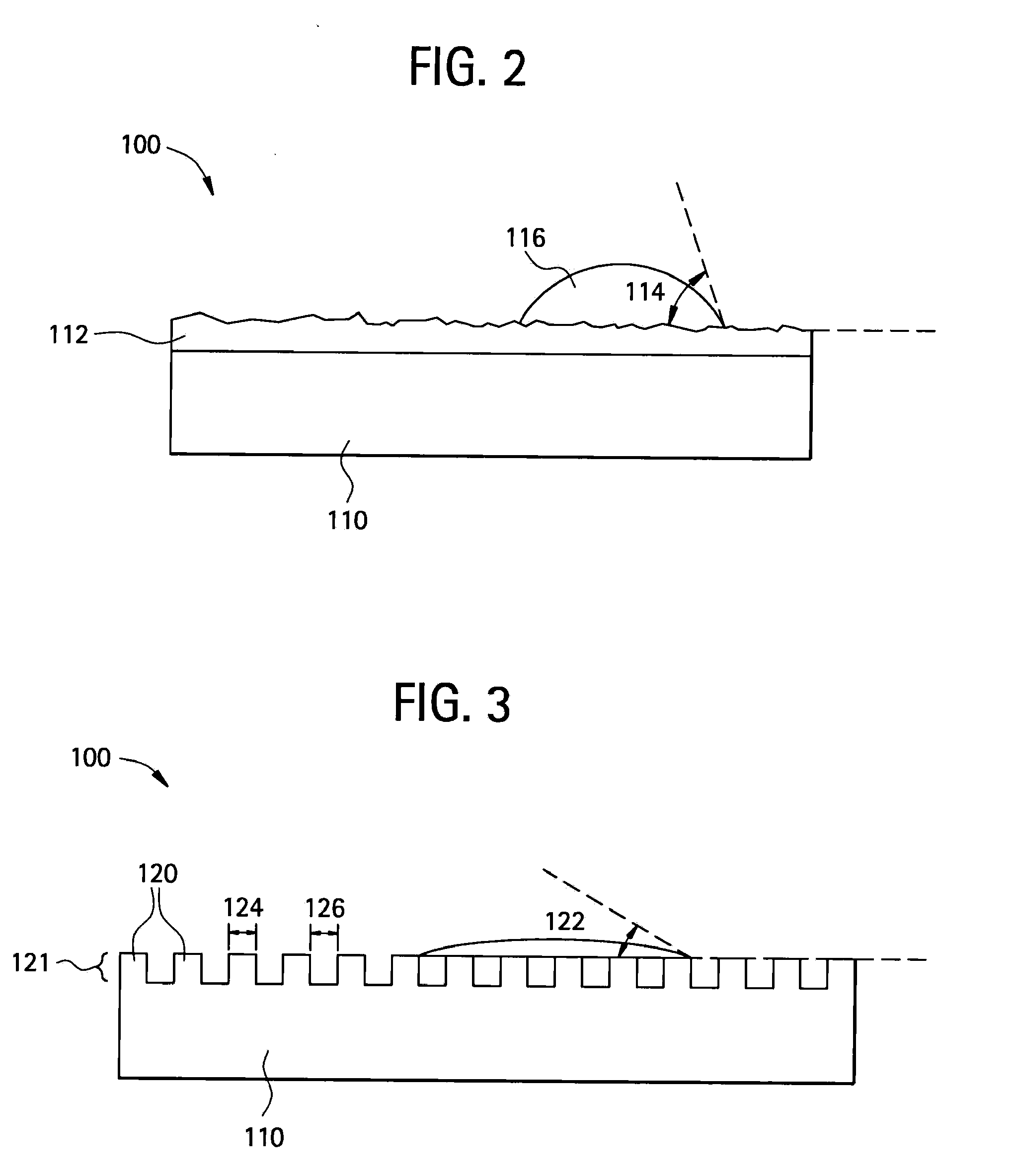Surface treatments and coatings for atomization
a technology of surface treatment and atomization, which is applied in the direction of medical atomizers, liquid spraying devices, machines/engines, etc., can solve the problems of non-uniform liquid film, broken droplets, and current atomizers without means to ensure, so as to promote the atomization of liquid and reduce the mean drop size
- Summary
- Abstract
- Description
- Claims
- Application Information
AI Technical Summary
Benefits of technology
Problems solved by technology
Method used
Image
Examples
example 1
[0066]Silicon substrates were provided via lithography with right rectangular prism post features about 3 micrometers in width (a) and having a variety of post spacings (b / a ratios) and aspect ratios (h / a). The substrates were then placed in a chamber with a vial of liquid fluorsilane (FS), and the chamber was evacuated to allow the liquid to evaporate and condense from the gas phase onto the silicon substrate, thereby creating a hydrophilic film on the surface. The effective Wenzel state contact angle was recorded as a function of b / a ratio. FIG. 8 graphically illustrates the trend of varying the b / a ratio to reduce the effective contact angle. Three surfaces having nominal contact angles (CAn) of 50, 60, and 70 degrees respectively were textured with the rectangular post surface features. As shown in FIG. 8, the effective contact angle is lowered (as low as about zero degrees) as the relative spacing between each post is reduced. Moreover, increasing the aspect ration can result i...
example 2
[0069]FIG. 11 is a plot of effective contact angles (degrees) versus relative spacing of surface features (spacing dimension (b) divided by width dimension (a)). The graph shows a variety of hydrophilic / superhydrophillic surfaces that could be employed in the pre-filming and / or lip regions of an atomizer. The surface features were posts protruding from the surface and had a width dimension (a) of about 3 micrometers. As seen in the figure, the effective contact angle of the surface increased from about 25 degrees to about 40 degrees when the relative spacing of the post features was increased from about 4 to about 10. When the relative spacing of the features were closer (e.g. a b / a to of less than about 4), the effective contact angle of the surface was about 0 degrees or completely wetting.
[0070]Ranges disclosed herein are inclusive and combinable (e.g., ranges of “up to about 25 wt %, or, more specifically, about 5 wt % to about 20 wt %”, is inclusive of the endpoints and all int...
PUM
 Login to View More
Login to View More Abstract
Description
Claims
Application Information
 Login to View More
Login to View More - R&D
- Intellectual Property
- Life Sciences
- Materials
- Tech Scout
- Unparalleled Data Quality
- Higher Quality Content
- 60% Fewer Hallucinations
Browse by: Latest US Patents, China's latest patents, Technical Efficacy Thesaurus, Application Domain, Technology Topic, Popular Technical Reports.
© 2025 PatSnap. All rights reserved.Legal|Privacy policy|Modern Slavery Act Transparency Statement|Sitemap|About US| Contact US: help@patsnap.com



